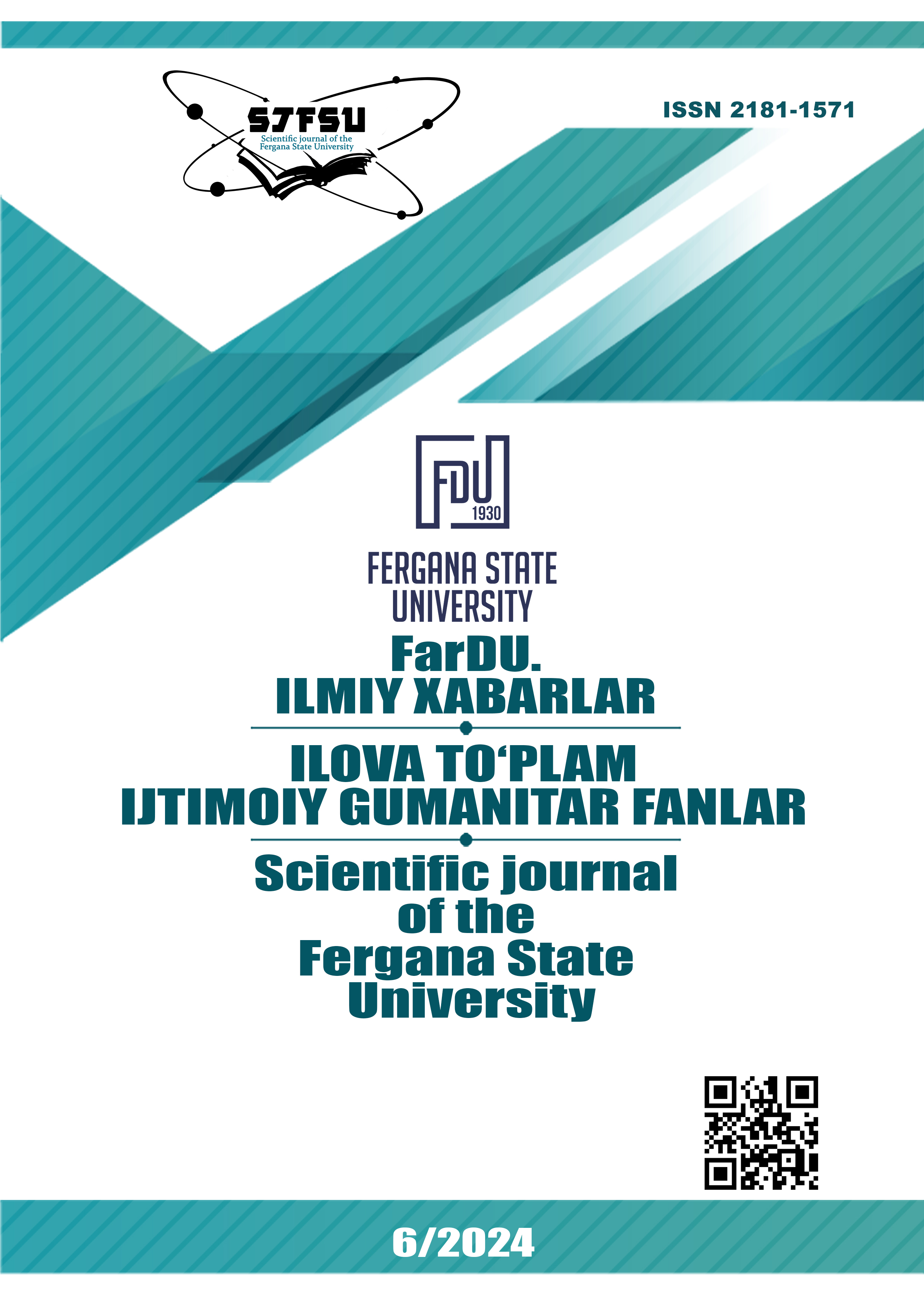ON THE POETICS OF ADVENTURE AND FICTION WORKS IN ENGLISH CHILDREN'S LITERATURE
Keywords:
children's literature, English literature, romanticism, classical period, children's characters, school literature, godly literature, Victorian era.Abstract
This article provides detailed information about the development and research of children's literature in English literary studies. It emphasizes that children's literature has distinct research objects, often expressed through synonymous terms. The development of English children's literature from the late 18th century to the early 20th century is characterized by testing new literary styles and directions rooted in Romanticism and classical tradition. The article highlights the unique features of children's literature, the differences between children's and adult literature through genres such as fantasy and absurdism, and the role of childhood themes in the artistic process. It also notes the significance of the formation of child characters and the uniqueness of children's literature during the Romantic period, particularly in the Victorian era. Additionally, the article encompasses the specific goals and artistic elements of children's literature. In addition, information is provided about a number of scholars who are considered representatives of English children's literature. In particular, the role of Charles Dickens's "Oliver Cromwell" and Lewis Carroll's "Alice in Wonderland" and "Through the Looking Glass" in English children's literature is discussed. The artistic images of children's works such as Oliver Cromwell and Alice are analyzed from a gnoseological perspective.
References
Скуратовская Людмила Ивановна. Основные жанры детской литературы в историко-литературном процессе Англии XIX-начала XX века – Москва, Литература народов, 1991
Philip Collins. Charles Dickens British Novelist – Britannica, 2013.
J. Harvey Darton. Story of Alice in Wonderland - The Western Gazette, 1936.
Ortiqov, R. (2024). THE DEVELOPMENT OF BRITISH CHILDREN’S LITERATURE. Development of pedagogical technologies in modern sciences, 3(9), 65-70.
Ortiqov, R. (2024). INGLIZ FANTASTIK ASARLARINING ILK NAMUNALARIDAN ZAMONAVIY DURDONALARIGACHA BO‘LGAN RIVOJLANISH BOSQICHI. Инновационные исследования в науке, 3(5), 94-98.
Ortiqov, R., & Shokirov, S. (2024, June). TRACING THE DEVELOPMENT FROM CLASSICAL ROOTS TO CONTEMPORARY MASTERPIECES OF ENGLISH FANTASY. In Fergana State University conference.
Downloads
Published
Issue
Section
License
Copyright (c) 2025 Scientific journal of the Fergana State University

This work is licensed under a Creative Commons Attribution-NonCommercial-NoDerivatives 4.0 International License.
Most read articles by the same author(s)
- , THE THEORETICAL PROBLEM OF THE IMAGE OF CHILD , Scientific journal of the Fergana State University: No. 3 (2024): Scientific journal of the Fergana State University. Application set (Social humanities sciences)
- , ANALYSIS OF MONOLOGUES IN "OTA" BY ULUGBEK HAMDAM , Scientific journal of the Fergana State University: No. 6- TOM (2023): SPECIAL ISSUE
- Rustamjon Ortiqov , THE ROLE AND IMPORTANCE OF COMPUTER GAMES IN EDUCATION , Scientific journal of the Fergana State University: No. 3 (2024): Scientific journal of the Fergana State University. Application set (Social humanities sciences)
- , IMAGE OF CHILDREN IN AUTOBIOGRAPHIC NARRATIVES , Scientific journal of the Fergana State University: No. 3 (2024): FarDU.Ilmiy xabarlar jurnali. Ilova to'plam (Aniq va tabiiy fanlar)
- , , , STABILITY SOLUTION OF DYNAMICAL SYSTEMS ON A PART OF THE VARIABLES , Scientific journal of the Fergana State University: No. 2 (2023): Scientific journal of the Fergana State University (Exact and natural sciences)
- , THE CONCEPT OF IDEOLOGICAL SOLIDARITY AND ITS PHILOSOPHICAL ANALYSIS , Scientific journal of the Fergana State University: No. 1 (2025): FarDU ilmiy xabarlari jurnali (IJTIMOIY FANLAR)

